This website uses cookies so that we can provide you with the best user experience possible. Cookie information is stored in your browser and performs functions such as recognising you when you return to our website and helping our team to understand which sections of the website you find most interesting and useful.
Networked Lighting Controls
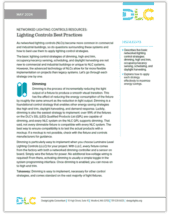
Lighting Controls Best Practices
This resource explains the following basic networked lighting control strategies: dimming, high end trim, occupancy/vacancy sensing, scheduling, and daylight harvesting, and gives an overview of how to implement them to maximize energy savings.
Key Takeaways
- Describes five basic networked lighting control strategies: dimming, high end trim, occupancy/vacancy sensing, scheduling, and daylight harvesting.
- Explains how to apply each strategy effectively to maximize energy savings.
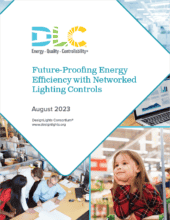
Future-Proofing Energy Efficiency with Networked Lighting Controls
This is a summary of the potential study commissioned by the DLC titled "Economic Potential of Networked Lighting Controls in Commercial Buildings: Tapping the Added Value of HVAC Connections."
Key Takeaways
- Learn how integrating HVAC and NLC systems can enhance energy efficiency, increase ratepayer savings, and lower carbon emissions.
- Action items for regulators and energy efficiency programs based on the new data.
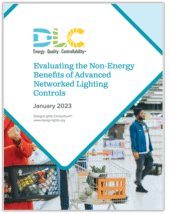
Evaluating the Non-Energy Benefits of Advanced Networked Lighting Controls
This resource, which summarizes research commissioned by the DLC and conducted by Skumatz Economic Research Associates, Inc. (SERA), identifies non-energy benefits (NEBs) specific to NLC usage and develops a methodology for assigning them quantitative values.
Key Takeaways
- “Non-energy benefits” of NLCs can enable inclusion of anticipated savings from productivity gains, safety and security enhancements, extended equipment lifecycles, and more in cost-benefit calculations.
- Developing a methodology for assigning quantitative values to NEBs will enable utility incentive program staff and others to use an expanded set of metrics for measuring the cost-effectiveness of NLC implementation.
- Research showed statistically significant non-energy benefits from NLCs for both lighting decision makers and building occupants.
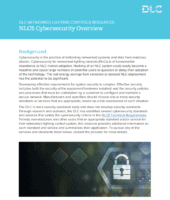
NLC5 Cybersecurity Overview
UPDATED 12/21/2022 - CSA/ANSI T200 updated from a service to a standard. Through research and outreach, the DLC has identified several cybersecurity standards and services that satisfy the cybersecurity criteria in the NLC5 Technical Requirements. To help manufacturers and other users find an appropriate standard and/or service for their networked lighting control system, this resource provides additional information on each standard and service and summarizes their application.
Key Takeaways
- Summaries of cybersecurity services and standards recognized by the DLC (updated 7/14/22 to include PSA standard)
- Descriptions of the primary application and timeline for certification of the cybersecurity standards listed in Tables CS-1 & CS-2 of the DLC NLC5 Technical Requirements
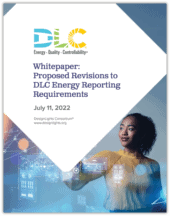
Whitepaper: Proposed Revisions to DLC Energy Reporting Requirements
This whitepaper describes various proposals to make DLC requirements and recommendations for energy reporting more useful to a broader audience. The proposals are based on the new ANSI standards and on input from a working group convened in Q4 2021 comprised of representatives from DLC member efficiency programs and DLC industry partners.
Key Takeaways
- Energy efficiency programs have varying requirements for energy reporting, creating burden for manufacturers to create a unique reporting function for each program.
- This whitepaper describes various proposals to make DLC requirements and recommendations for energy reporting more useful to a broader audience.
- These proposed changes are being made available in advance of a public comment period so that stakeholders can consider implementation and prepare accordingly.
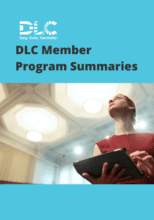
DLC Member Program Summaries – Networked Lighting Controls
Updated as of: 2/18/22 This list displays which DLC Members provide rebates for networked lighting controls. Please visit the program websites for additional detail.
Still need help?
© 2023 DesignLights Consortium. The DesignLights Consortium is a project of Efficiency Forward, Inc., a non-profit 501(c)3 organization. Privacy Policy Terms of Use


